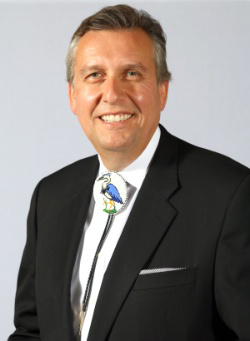Seneca Niagara casino destroying Niagara Falls
By Frank Parlato
Fortunately for the people of Buffalo, the Seneca Buffalo Creek Casino will only have only one restaurant and will not have a hotel or retail stores.
As Robert Chamberlain, senior vice president of Seneca design and construction said of the Buffalo facility, "There are other businesses around here, and we want them to thrive."
This is good since nothing can survive in the shadow of Seneca’s tax free operations.
The Seneca plan in Buffalo is to operate a casino to attract the grind players. As the name suggests, grind players bet in small amounts, "grinding" out, for example, $20 in chips through a series of $1 bets.
Premium players, on the other hand, bet in large amounts, with a better understanding of the games in general and access to substantial bankrolls.
These are attracted to casinos that expend efforts to attract and reward them with freebies and ultimately win a lot of money off of the gamblers.
There are less premium gamblers than grind players.
In 2002, NY Governor George Pataki while running for reelection gave the tiny, Sovereign nation, of approximately 7,300, the Seneca Nation of Indians, a new 50 acre territory on land formerly part of Niagara Falls.
The land grant was made in order to build a casino, which was illegal in New York State. The trick of truth was they would take 50 acres out of New York and then gaming would be legal.
It was said it would attract tourists, be a catalyst for development and generate revenue for Albany through collection of a percentage of slot machine revenues. There was a provision for Niagara Falls to get 6.25 percent of slot machine profits also.
None of it worked as promised.
The Seneca-Niagara Casino opened in what used to be the city’s convention center on December 31, 2002. The Senecas quickly learned the most profitable gambling was not premium gamblers but the grind.
This is the true reason for downsizing Buffalo’s casino plans. Nothing is as lucrative as the grind.
The average net revenue for a single slot machine at Seneca Niagara is $72,000 per year on some $900,000 plunked in the machine.
In Buffalo, with the Commodore Perry public housing project and other neighborhoods of low socio-economic standing nearby there are plenty of grind players to fill a low level casino.
In Niagara Falls, the Senecas opened a buffet, a pub, a “high- end” steak house, an Italian restaurant, an Asian restaurant, an American style restaurant, a coffee shop, a glamour spa, gift stores, and a 26 story hotel – all in direct competition with local businesses in the falls.
In Niagara Falls, Seneca sells clothing, jewelry, toys, art, electronics, and cigarettes-- tax-free. The Seneca-Niagara Hotel, the largest in the area, has deluxe rooms and pillow-top beds.
In Buffalo they don’t need that stuff. They need the grind.
In Niagara Falls it was stupid to create a tax-free nation in the midst of highly-taxed, over-regulated, struggling businesses. And while the casino created jobs, most of them are low paying. Studies suggest that for every job created by a casino, at least one regional job is lost.
Meantime, the Senecas operate their food, beverage, lodging, entertainment and retail as “loss leaders” - intended to get people into the casino.
More than $40 million worth of food, beverage, lodging, entertainment and retail sales are given away yearly as promotions to encourage gambling.
80% of hotel guest room revenue; 52% of food and beverage and 73% of entertainment and retail merchandise was given away in 2010.
Meantime, Senecas pay no property taxes. Senecas do not have to collect sales tax or bed tax. They do not pay for licenses, or submit to health inspections. Their customers can smoke inside and he sells liquor 24 hours per day.
Senecas do not have to comply with minimum wage laws. They are not subject to sexual harassment laws. Though their employees are covered by New York workers compensation and unemployment insurance, Senecas do not have to pay into either fund. American employers have to subsidize Seneca employees who are laid off or injured on the job.
The typical full-service restaurant in Niagara Falls may pay $10,000 annually for property taxes, licenses and permits. For this they receive city services such as police and fire services and specific operating privileges. Seneca restaurants pay nothing to receive the same services and privileges.
Seneca pays no amusement fees, music license, vending license, building permits, restaurant licenses.
On top of that, they have a monopoly on a product guaranteed to make a profit: gambling.
No wonder the area surrounding the Niagara casino has so many vacancies, why there is a net loss of active businesses and why every new start up and every hotel that changed hands since the Senecas came has been subsidized by taxpayers.
For all gambling, one has to hope for the worst for his fellow man in order to gain the best for himself.
One person gains while others lose. For Seneca this has been gospel truth.
The suckers, the premium gamblers are the taxpayers of Niagara Falls who have been subjected to the treatment of the Seneca grind.
250.jpg)
250.jpg)
250.jpg)
